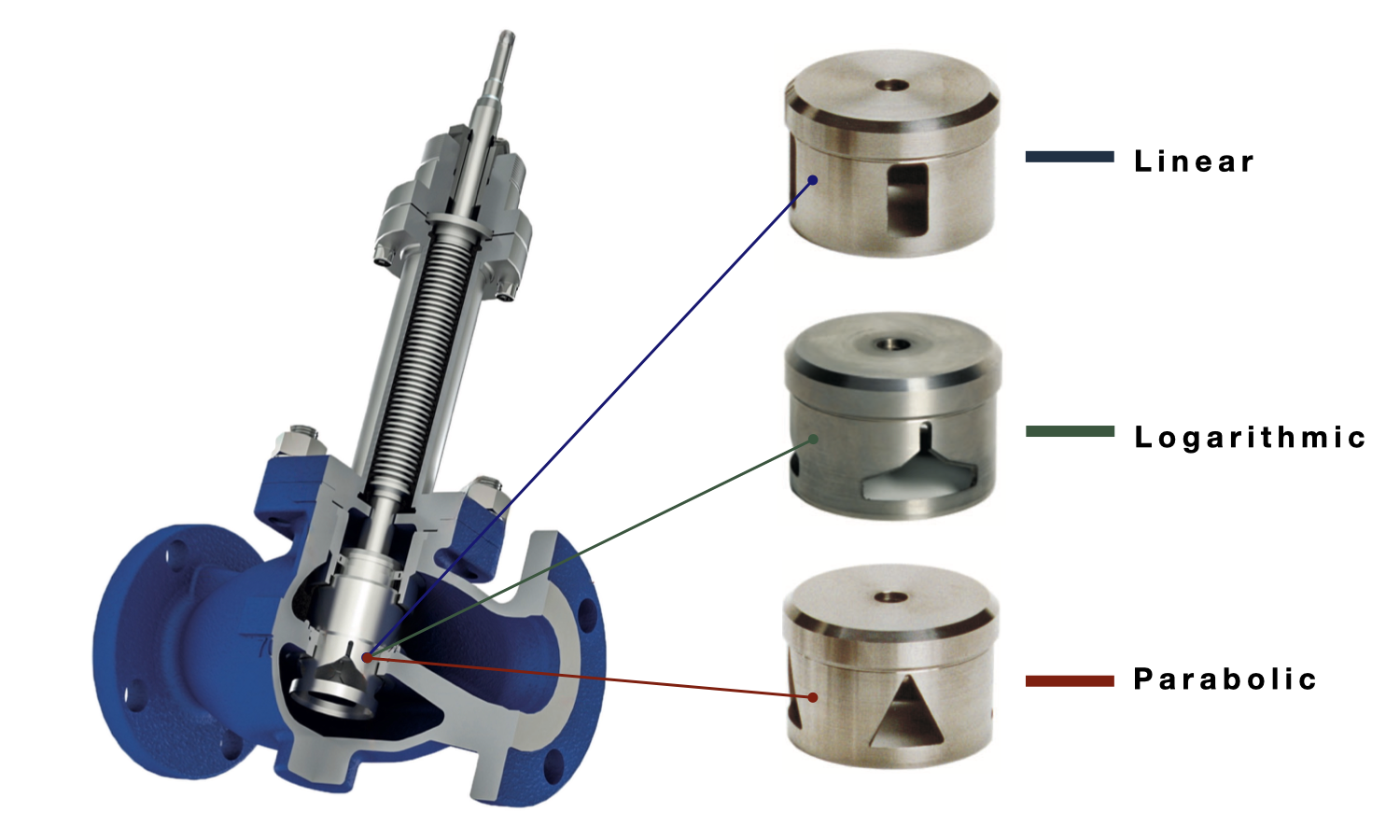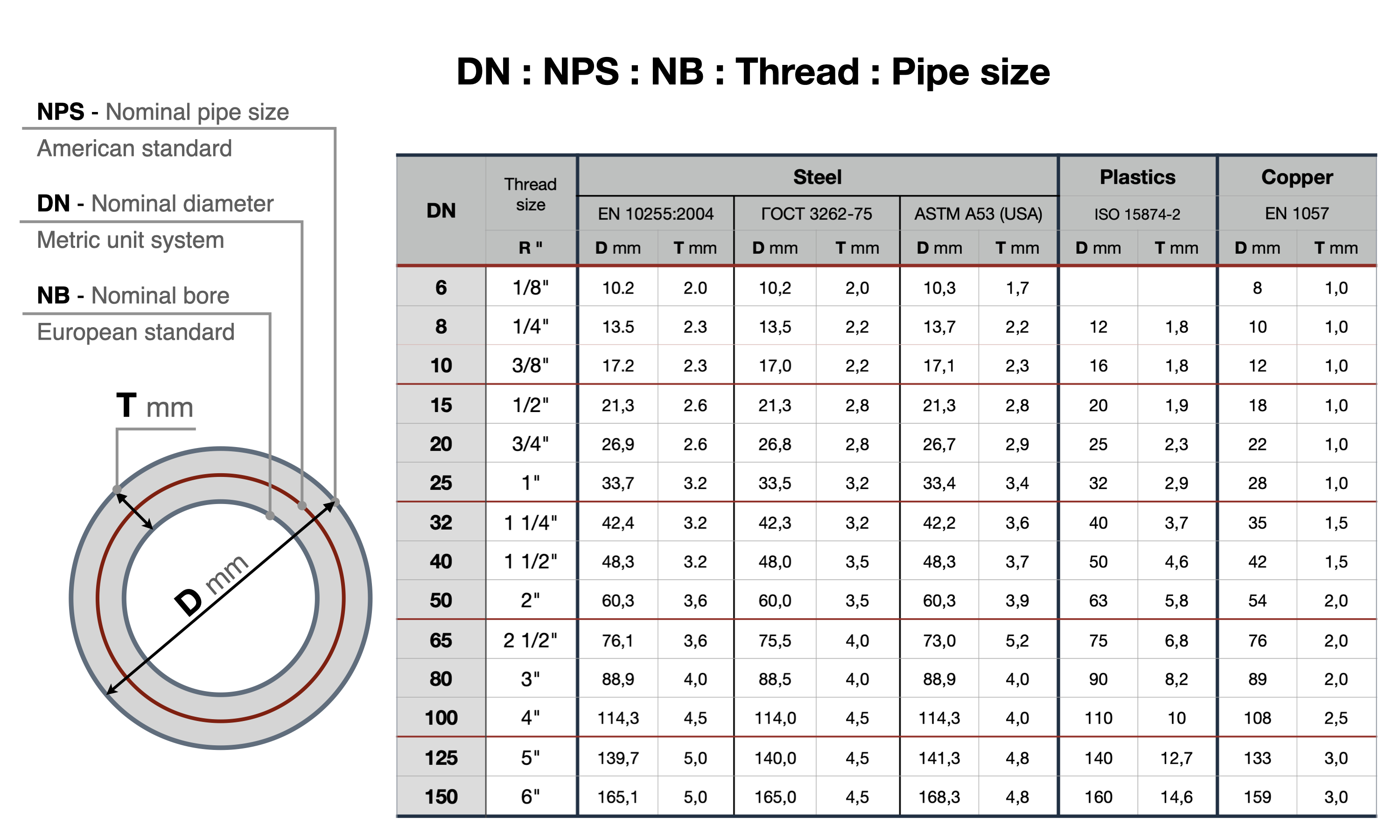Please do not block ads on our site. Clicks on ads help us exist, grow and become more useful for you!
Technical specifications of control valves
Flow coefficient of a control valve (Kvs) - the numerical value of the flow coefficient Kvs equals the flow rate of water through the valve in m³/hour at a temperature of 20°C with a pressure drop of 1 bar.
Dynamic range of control - the ratio of the maximum flow coefficient of a control valve when fully open (Kvs) to the minimum flow coefficient (Kv) at which the declared flow characteristic is maintained. The dynamic range of control is also called the regulating ratio.
For example, a control valve with a dynamic range of 50:1 at Kvs 100 means that the valve can control a flow rate of 2m³/hour while maintaining its characteristic properties.
Most control valves have dynamic ranges of control of 30:1 and 50:1, but there are valves with very good regulating properties that have a dynamic range of control of 100:1.
Authority of a control valve - characterizes the regulating ability of the valve. The numerical value of the authority equals the ratio of pressure drop across the fully open valve to the pressure drop across the regulated section.
The lower the authority of a control valve, the more its flow characteristic deviates from the ideal and the less smooth the flow change will be during the movement of the valve stem. For example, in a system controlled by a valve with a linear flow characteristic and low authority, reducing the flow area by 50% may only decrease the flow rate by 10%, while in a high-authority system, a 50% reduction in flow area should reduce flow through the valve by 40-50%.
It is recommended to have a pressure drop on a control valve with a linear characteristic of not less than 50% of the available pressure drop and on a valve with a logarithmic characteristic - not less than 10%.
Flow characteristic of control valve represents the dependence of relative flow rate through the valve on the relative stroke of the control valve while maintaining a constant pressure drop on it.
Linear flow characteristic - equal increments of relative stroke of the valve cause equal increments of relative flow rate. Control valves with linear flow characteristics are used in systems where there is a direct relationship between the controlled variable and the flow rate of the medium. Control valves with linear flow characteristics are ideal for maintaining the temperature of the heat carrier mixture in heating stations with dependent connection to the heating network.
Equal percentage flow characteristic (logarithmic) - the dependence of the relative increase in flow rate on the relative increase in the stroke of the valve is logarithmic. Control valves with equal percentage flow characteristics are used in systems where the variable being controlled does not linearly depend on the flow rate through the control valve. For example, control valves with equal percentage flow characteristics are recommended for use in heating systems to regulate the heat output of heating devices, which does not linearly depend on the flow rate of the heat carrier. Control valves with logarithmic flow characteristics can effectively regulate the heat output of high-speed heat exchangers with a low temperature drop of the heat carrier. It is recommended to use these valves in systems where linear flow characteristic regulation is required and it is impossible to maintain a high authority on the control valve. In such cases, the reduced authority changes the equal percentage flow characteristic of the valve, bringing it closer to the linear one. This feature is observed for control valve authorities of not less than 0.3.
Parabolic flow characteristic - the dependence of the relative increase in flow rate on the relative stroke of the valve is subject to a quadratic law (it passes through a parabola). Control valves with parabolic flow characteristics are used as a compromise between valves with linear and equal percentage characteristics.
DN of control valve - nominal diameter of the hole in the connecting flanges. The DN value is used to standardize the type sizes of pipeline fittings. The actual diameter of the hole may differ slightly in either direction.
PN of control valve - nominal pressure - the maximum excess pressure of the working medium at a temperature of 20°C, which ensures long and safe operation.
question : comment : feedback
527
 Catalog of
Catalog of control valves
Belimo
Danfoss
Danfoss
Danfoss
Danfoss
Danfoss
Siemens
Siemens
Siemens
IMI Hydronic
IMI Hydronic
LDM
LDM
Clorius
Clorius
Clorius
Clorius
Honeywell - Resideo
Honeywell - Resideo
Honeywell - Resideo
ESBE
ESBE
IMI Hydronic
IMI Hydronic
ESBE
ESBE
Clorius
Clorius









 Tutorial Belimo
Tutorial Belimo
